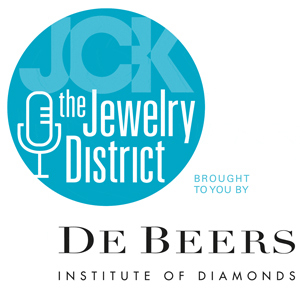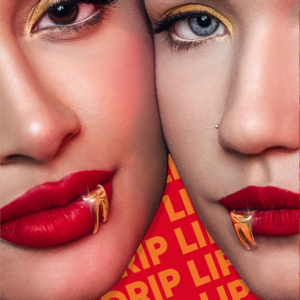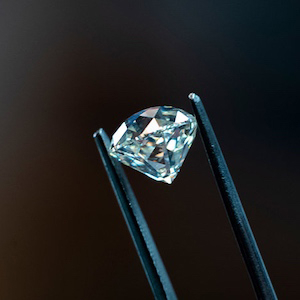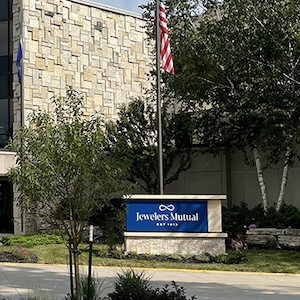
Just back from JCK Las Vegas, JCK editor-in-chief Victoria Gomelsky and news director Rob Bates recap highlights from the big event, where they were delighted to see a return to the liveliness of pre-COVID shows. Diamond trends were a hot topic among attendees and exhibitors, so Victoria and Rob delve into a range of buzzworthy diamond-related observations from Vegas. Among them: Lightbox’s foray into lab-grown engagement rings and how intensifying focus on the three P’s (provenance, people, and planet) is reshaping the industry.
Sponsored by De Beers: institute.debeers.com
Show Notes
01:38 Top Takeaways From JCK Las Vegas
06:16 Diamond Report
09:55 Lightbox Introduces Bridal Jewelry
14:27 Tracr and the Traceability Issue
Episode Credits
Hosts: Rob Bates and Victoria Gomelsky
Producer and engineer: Natalie Chomet
Plugs: @jckmagazine; institute.debeers.com, lasvegas.jckonline.com
Show Recap
Top takeaways from JCK Las Vegas
Victoria and Rob report that the mood was upbeat at JCK Las Vegas, with attendance strong and vendors reporting brisk sales. Rob says it felt “like the old days—exhausting and exhilarating.” Victoria was struck by the vibrancy of people’s moods, evident from Day 1 of the JCK Luxury show. “People said it rivaled recent past years in terms of sales, and those were some of the best years the industry has ever seen,” she notes. While 2023 is unlikely to beat 2022, strong sales at the show bode well for the fall season and the final quarter. The downturn over the past six months might simply stem from people needing to restock, which they did in Vegas, she theorizes.
Victoria was pleased to see a robust mix of familiar faces and newcomers, including those in the Natural Diamond Council’s Emerging Designers Initiative, and a good turnout by the Black in Jewelry Coalition in the Design Collective.
Diamond report
After moderating separate panels on lab-grown and natural diamonds, Rob concludes that both categories face challenges. Natural diamonds are losing market share, while prices are sinking in the lab-grown sector. The two sectors need to find ways to work together, he stresses. There’s talk of lab-grown manufacturers moving away from engagement rings into fashion jewelry. Given the abundance of lab-grown fashion jewelry and colored diamonds Rob saw at the show, that reset may be happening already. While he didn’t spot many unusual shapes among the lab-grown diamonds exhibited, that’s top of mind for many. “To avoid the race to the bottom, people have to find a way to make themselves stand apart,” he says, noting that the same holds true for the natural diamond business.
Representatives from Namibia and Botswana attended Rob’s diamond panels at JCK. “Having people from producer countries, including Botswana’s minister of mines, changed the typical lab-grown sustainability conversation,” he says. “I’m hoping they keep coming to the show. Hopefully next year we’ll have them on stage.”
Lightbox introduces bridal jewelry
In a move that counters the trend toward lab-grown fashion jewelry, De Beers’ lab-grown brand Lightbox recently started selling engagement rings. Victoria recalls that when Lightbox was introduced in 2018 at JCK, it was strictly a fashion product. She wonders what prompted the decision to expand to bridal jewelry.
Rob spoke with Lightbox CEO Antoine Borde in Las Vegas, who told him the brand is taking its cues from consumers—and they want lab-grown engagement rings. It’s ironic that the market is moving toward what Lightbox set out to do originally, while Lightbox may be shifting gears, Rob points out.
Tracr and the traceability issue
The De Beers booth in Las Vegas was a hub for conversations about a range of timely topics. One that piqued Victoria’s interest was Tracr, the company’s blockchain traceability program. It’s a platform that starts at the source (the mines) and provides assurance at scale. It began as an internal De Beers project, but when the war in Ukraine started, the company rolled it out to the industry. Tracr is drawing interest in part due to the prospect of increased sanctions against Russian polished diamonds next year, Rob says. If anyone bringing diamonds into the U.S. needs to prove the stones aren’t Russian, the information Tracr provides could be useful as documentation.
Victoria got to see the program at work during her recent trip to Botswana, where micro-detailed high-speed photographs were being taken of rough diamonds from different angles. These can later be matched to actual stones scanned at sightholder offices, proving that the diamonds originated in a quality producing country and were handled responsibly as they came to market.
Also new from De Beers is Origin, a digital immersive experience that lets consumers and retailers scan a QR code to learn about diamond-producing countries and the positive impact a diamond purchase has on various communities.
What’s the upshot of all this? Traceability, tracking, and provenance are crucial today, Victoria says. As De Beers Brands CEO Marc Jacheet told her, De Beers is promoting the new three P’s of provenance, people, and planet, over and above the 4Cs.
Does the average consumer in America care where their diamonds come from? Rob and Victoria are skeptical, but regardless, the world is moving toward greater transparency. Rob hopes labeling the country of origin will eventually extend to lab-grown diamonds, not just natural ones. He points out that lab-grown diamond makers have capitalized on the natural diamond industry’s negative image, with manufacturers playing up claims of better “ethics” and “eco-superiority” despite warnings by the Federal Trade Commission not to use such language. People don’t often discuss the good works diamonds do for countries like Botswana, he says, and De Beers sees origin certification as a way to deliver that message.
Victoria agrees, noting that she spoke with numerous Gaborone locals, including De Beers employees, during her visit. “People seemed very proud and genuinely warm about the company and how it treats its employees,” she says. The livelihoods of a tremendous number of people in Botswana depend on diamonds mined there, which should be part of the sustainability conversation.
Any views expressed in this podcast do not reflect the opinion of JCK, its management, or its advertisers.
Follow JCK on Instagram: @jckmagazine
Follow JCK on Twitter: @jckmagazine
Follow JCK on Facebook: @jckmagazine





